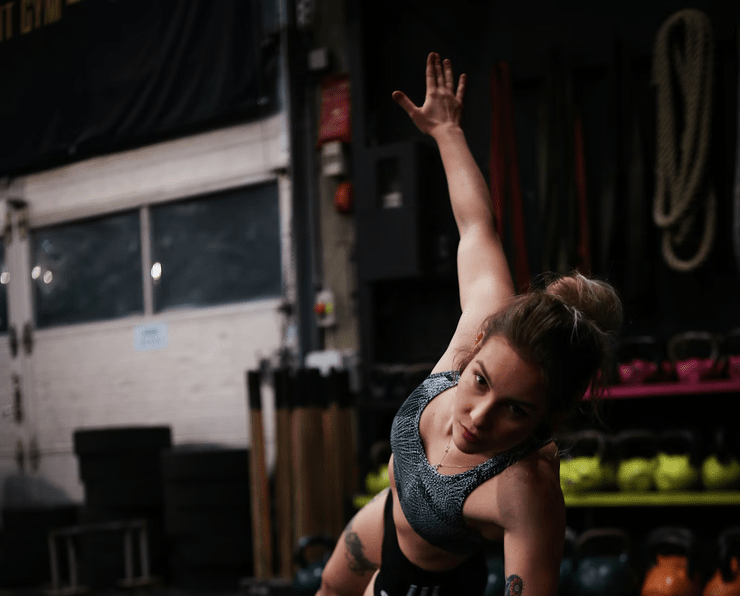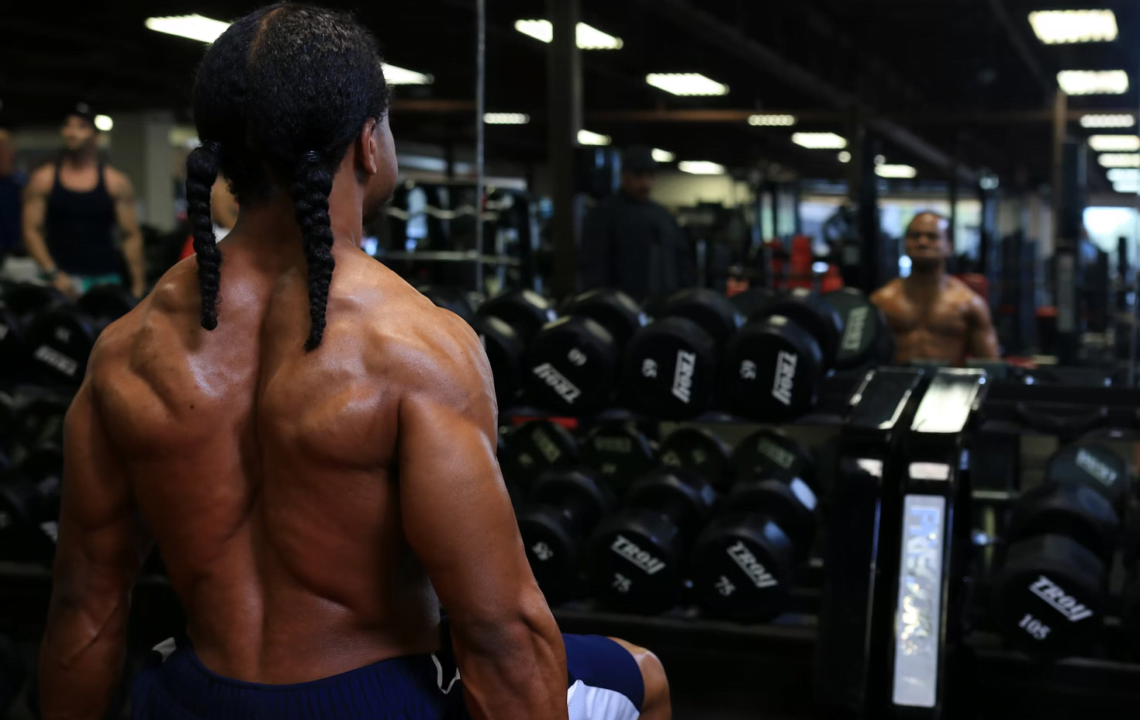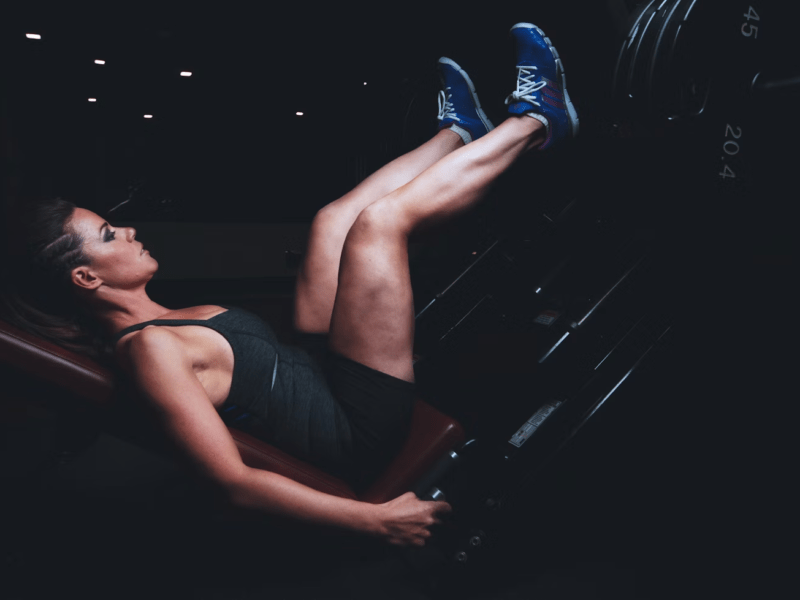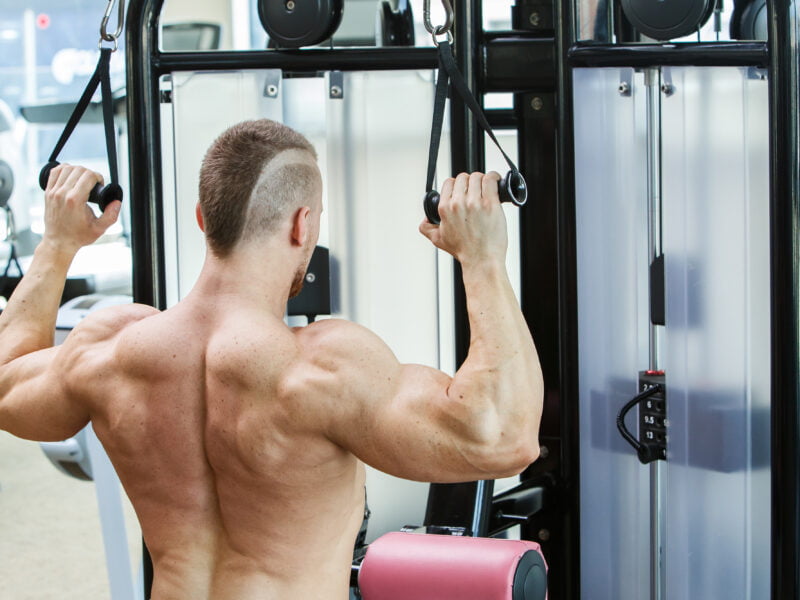Building lean muscle keeps your overall health and fitness in check, makes your everyday activities easier, and definitely improves your physical appearance. Plus, who doesn’t want to feel stronger and more confident?
In this article, we’ll sneak a peek at what lean muscle is, why it’s important, and how you can build it effectively with diet and the right workout! So, whether you’re a fitness newbie or a seasoned gym-goer, there’s something here for you.
Flex those brain muscles here, so that you can flex your lean muscles later!
What is Lean Muscle?
Lean muscle is more metabolically active than fat, which means it burns more calories even when you’re binge-watching your favorite series. This is because muscle tissue requires more energy to maintain than fat tissue. So, the more lean muscle you have, the more calories your body needs just to keep you alive. That’s a pretty sweet deal if you’re looking to manage your weight or lose some fat.
Having lean muscle means better overall health. They contribute to your physical strength and endurance. Meaning your everyday tasks become easier – from lifting heavy objects to climbing stairs without getting winded. Plus, strong muscles support your joints, which can help prevent injuries. And let’s not forget, having lean muscle gives you that toned, athletic look that many desire.
Why Should One Gain Lean Muscles? - Benefits of Lean Muscle
Now, why should you care about gaining lean muscle? Simple. It makes life better. Here’s why:
Increased Strength and Physical Function
When you have more lean muscle, your overall strength and physical function improve significantly. This is particularly important as you age. Muscle mass naturally decreases with age, leading to a decline in strength and physical ability. By focusing on building and maintaining lean muscle, you can counteract this natural decline, ensuring you remain strong and capable well into your later years.
Better Metabolism and Weight Management
As mentioned earlier, lean muscle boosts your metabolism. This is because muscle tissue is more metabolically active than fat tissue, meaning it burns more calories at rest. This can be particularly beneficial if you’re trying to lose weight or maintain a healthy weight. By increasing your muscle mass, you can create a more efficient calorie-burning machine within your body, helping you manage your weight more effectively.
Injury Prevention and Joint Support
Strong muscles support your joints, reducing the risk of injuries. When your muscles are weak, your joints take on more stress during physical activities, which can lead to injuries. By strengthening your muscles, you provide better support for your joints, reducing the risk of injuries and improving your overall physical resilience.
Enhanced Physical Appearance and Confidence
Lean muscle contributes to a toned, athletic appearance. This can boost your confidence and self-esteem, making you feel better about your body and yourself. When you feel good about how you look, it can positively impact other areas of your life, from your social interactions to your performance at work.
Improved Mental Health and Well-Being
Building lean muscle and engaging in regular physical activity can have a significant positive impact on your mental health. Exercise releases endorphins, which are natural mood lifters. This can help reduce symptoms of depression and anxiety, improve your mood, and enhance your overall sense of well-being. To do so, try the best somatic exercises for relieving stress and anxiety.
How To Build Lean Muscles?
Building lean muscle requires a combination of strength training, proper nutrition, and adequate recovery. Here’s a step-by-step guide:
Step 1: Strength Training
Strength training is the cornerstone of building lean muscle. It involves lifting weights or using resistance to challenge your muscles, causing them to grow stronger and bigger. Focus on compound exercises that work for multiple muscle groups at once. Examples include squats, deadlifts, and bench presses. Aim for 3-4 sessions per week, with each session lasting 45-60 minutes. If you’re worried about bruises, here is how you can avoid them.
Step 2: Nutrition
Your muscles need the right nutrients to repair and grow after workouts. Consume a balanced diet rich in protein, healthy fats, and complex carbohydrates. Protein is particularly important for muscle repair and growth. Aim to include protein sources like chicken, fish, beans, and protein supplements in your diet. Don’t forget to stay hydrated – water is essential for all bodily functions, including muscle growth.
Step 3: Recovery
Recovery is just as important as the workout itself. Muscles grow during rest, not during workouts. Ensure you get 7-8 hours of sleep per night to allow your muscles to repair and grow. Consider incorporating active recovery methods like light stretching, yoga, or low-intensity cardio to keep your body moving without putting too much strain on your muscles.
6 Best Exercises To Build Lean Muscle

1. Squats
Squats are one of the most effective exercises for building lower body strength for losing your saddlebag fat. They work your quadriceps, hamstrings, and glutes, and also engage your core muscles. Squats can be performed with a barbell, dumbbells, or just your body weight. They help improve your overall strength and stability, making them a must-have in your workout routine.
2. Deadlifts
Deadlifts are another powerful exercise for building lean muscle. They target your hamstrings, glutes, and lower back, and also engage your core and upper body muscles. Deadlifts can be performed with a barbell, dumbbell, or kettlebell. They help improve your overall strength and posture.
3. Bench Press
It targets your chest, shoulders, and triceps, and can be performed with a barbell or dumbbells. The bench press helps improve your upper body strength and power.
4. Pull-Ups
Pull-ups are a challenging but effective exercise. They target your back, biceps, and shoulders, and can be performed with a pull-up bar or gymnastic rings. Pull-ups help develop your upper body pulling strength and muscle definition.
5. Rows
Rows are another great exercise for building abs, core, and upper body strength. They target your back, chest, core, biceps, and forearms, and can be performed with a barbell, dumbbells, or a rowing machine. Rows help improve your back strength and posture, making them an important exercise for building lean muscle.
6. Lunges
Lunges are a versatile exercise for building lower body strength like your quads. They target your quadriceps, glutes, and hamstrings, and can be performed with a barbell, dumbbells, or just your body weight. Lunges help improve your lower body strength and balance, making them a key exercise for building lean muscle.
Diet Plan To Build Lean Muscle
Building lean muscle requires a strategic diet plan focused on nutrient-dense foods. Here’s a sample plan that includes the promotion of specific diets designed to help build lean muscle and improve overall health:
30-30-30 Diet
The 30-30-30 diet is all about balance. It suggests that each meal should consist of 30% protein, 30% fats, and 30% carbohydrates. This diet is particularly beneficial for building lean muscle as it provides a balanced intake of macronutrients necessary for muscle growth and repair.
- Breakfast: Scrambled eggs with spinach, whole grain toast, and a side of avocado.
- Lunch: Grilled chicken breast with quinoa and mixed vegetables.
- Dinner: Baked salmon with sweet potatoes and steamed broccoli.
- Snacks: Greek yogurt with berries, a protein shake with a banana, and a handful of nuts.
90-30-50 Diet Plan
The 90-30-50 diet plan focuses on consuming 90 grams of protein, 30 grams of fiber, and 50 grams of healthy fats daily. This plan is designed to support muscle growth while ensuring you get enough fiber for digestive health and fats for hormonal balance.
- Breakfast: Oatmeal with berries and a scoop of protein powder.
- Lunch: Tuna salad with mixed greens, chickpeas, and olive oil dressing.
- Dinner: Grilled turkey burgers with a side of roasted vegetables.
- Snacks: Cottage cheese with a handful of almonds, a protein bar, and carrot sticks with hummus.
The 30-Day Intermittent Fasting Challenge
Intermittent fasting involves cycling between periods of eating and fasting. The 30-day challenge typically follows a 16:8 method, where you fast for 16 hours and eat during an 8-hour window. This method can help reduce body fat while preserving lean muscle mass.
Eating Window: 12 PM to 8 PM
- 12 PM: Chicken and vegetable stir-fry with brown rice.
- 3 PM: Protein smoothie with spinach, banana, and almond milk.
- 6 PM: Baked fish with quinoa and a side salad.
- 8 PM: Greek yogurt with honey and berries.
The 21-Day Fatty Liver Diet
The 21-day fatty liver diet focuses on foods that support liver health while promoting lean muscle growth. This diet includes plenty of vegetables, lean proteins, and healthy fats to reduce liver fat and improve overall health.
- Breakfast: Green smoothie with spinach, kale, apple, and protein powder.
- Lunch: Grilled chicken salad with mixed greens, bell peppers, and olive oil dressing.
- Dinner: Lean beef stir-fry with broccoli and brown rice.
- Snacks: Apple slices with almond butter, boiled eggs, and a handful of walnuts
Wrapping Up!
Building lean muscle is like being on an epic quest. It takes dedication, the right knowledge, and a consistent approach. By now, you’ve got a good grasp on what lean muscle is and why it’s so important. From crushing those compound exercises to fueling your body with a balanced diet, you’re well on your way to seeing serious gains.
Keep pushing yourself in the gym, eat like a champ, and get plenty of sleep. Your lean muscle journey is just getting started, and the results are going to be awesome!





